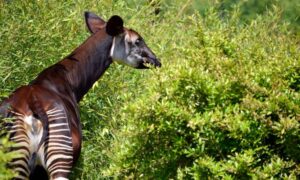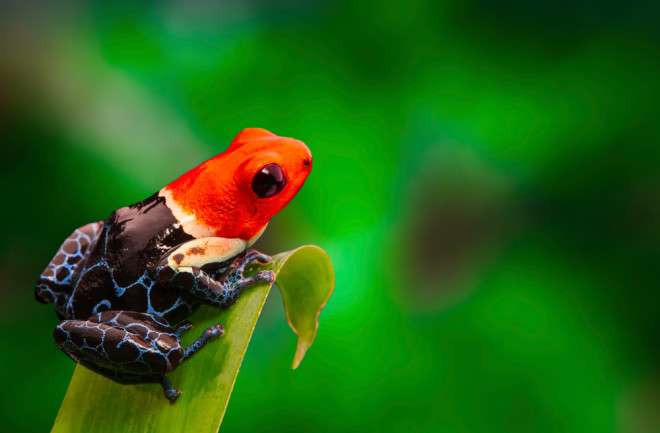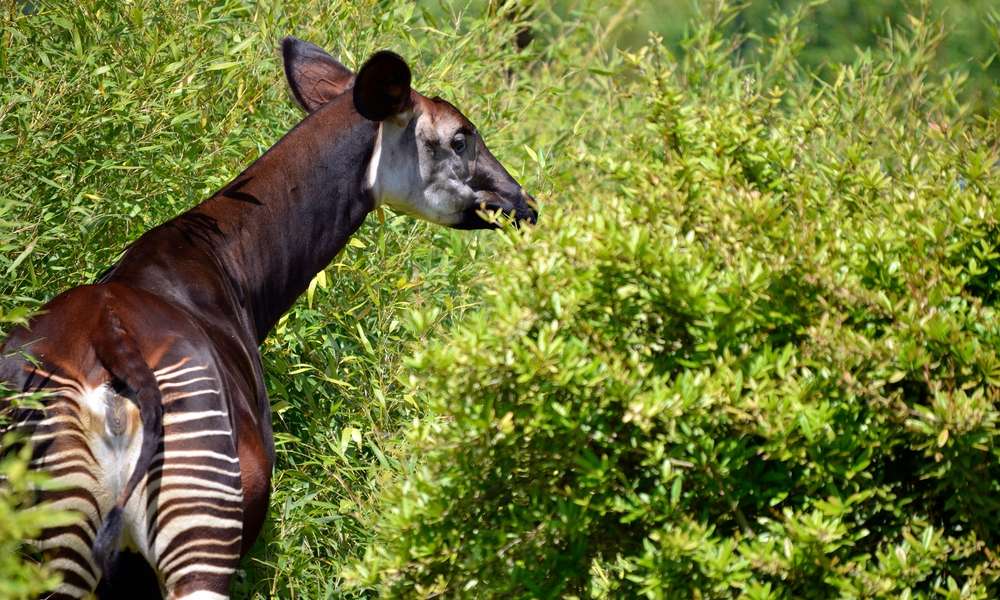Unraveling the Enigma of Tropical Forests

Tropical forests, with their lush canopies and teeming biodiversity, have long captivated the imagination of scientists and nature enthusiasts alike. However, a recent study, conducted by a formidable international collaboration of 356 scientists, has upended conventional wisdom regarding the diversity of these ecosystems. Led by researchers from University College London (UCL), the study reveals a surprising commonality among tropical forests worldwide, shedding light on the intricate web of life that defines these crucial ecological zones.
A Global Effort in Discovery
Published in the esteemed journal Nature on January 10, the study delves into the patterns of tree diversity across the world’s tropical forests. An extensive examination of over one million trees across 1,568 locations in Africa, the Amazon, and Southeast Asia has unearthed a remarkable revelation – a mere 2.2% of tree species constitute a staggering 50% of the total number of trees in these diverse ecosystems.
The Common Few and the Rare Many
Contrary to the prevailing notion of high species diversity, the researchers found that each continent houses the same proportion of a few common tree species alongside a multitude of rare species. This groundbreaking insight challenges our understanding of the intricate balance that governs tropical forests.
Lead author Dr. Declan Cooper, affiliated with both UCL Geography and UCL Centre for Biodiversity and Environment Research, emphasizes the importance of this discovery. “Our findings have profound implications for understanding tropical forests,” he asserts. “Focusing on the commonest tree species provides a new lens through which we can predict how entire forests will respond to environmental changes.”
The Numerical Tapestry of Tropical Forests
In quantifying their findings, the scientists estimate that a mere 1,053 tree species out of the 46,000 present in tropical forests account for half of the planet’s 800 billion trees. The remaining half comprises an astonishing 46,000 tree species, with the rarest 39,500 species constituting just 10% of the total tree population. This numerical tapestry paints a picture of both the dominance of a select few and the richness of a multitude of lesser-known species.
Patterns Across Continents
Despite the vast differences in the historical evolution and contemporary environments of the Amazon, Africa, and Southeast Asia, the researchers observed strikingly similar patterns in the proportion of common tree species. The Amazon, with its vast connected forest region, differs from the mostly disconnected islands of Southeast Asia. Africa, experiencing a drier and cooler climate, stands apart from the other two tropical forest regions. Yet, the near-identical patterns suggest the existence of a fundamental mechanism governing tree community assembly across all continents.
Identifying the Common Species
The study’s estimates of common species rely on statistical analyses that, while informative, do not provide specific tree names. To address this limitation, the scientists employed resampling techniques to estimate the most likely names of common species. The resulting list of 1,119 tree species names stands as the first comprehensive catalog of common species in the world’s tropical forests, providing a valuable resource for researchers seeking to unravel the ecological mysteries of these critical ecosystems.
The Faces of Commonality: A List of Common Tropical Tree Species
Africa
- Gilbertiodendron dewevrei: Limbali, otabo, agbabu, ekpagoi-eze
- Greenwayodendron suaveolens: Africa Teak, atorewa, ẹ́wáé, nchua, eleku, agudugbu
- Anonidium mannii: Junglesop, imido, asumpa, ọ̀ghẹ́dẹ́gbó
- Petersianthus macrocarpus: Stinkwood tree; soap tree abalé, tun-tue, pèh, ésiv, kpa
- Santiria trimera: adjouaba à racines aériennes, damzin, an-thanjka, kafe, poh, gólógóló.
- Strombosia pustulata: itako, afina, poé, mba esogo
- Tabernaemontana crassa: Adam’s-apple flower, k-poŋgbo, opuko, patié patié, pete-pete
- Staudtia kamerunensis: Niové, ichala, ọbara-okisi, íyìp ókōyò
- Strombosiopsis tetrandra: Bwika, Mbazoo
- Dichostemma glaucescens: Mangamba, Mongamba
Amazonia
- Oenocarpus bacaba: Bacaba, Turu Palm
- Eschweilera coriacea: matamatá
- Iriartea deltoidea: bombona
- Pentaclethra macroloba: pracaxi
- Euterpe oleracea: açaí palm
- Astrocaryum murumuru: murumuru
- Geissospermum sericeum: quina-quina branca, pao pereira
- Eperua falcata: bootlace tree, bi udu, wapa
- Euterpe precatoria: mountain cabbage; açai, açaizeiro, açaí-do-amazonas, palmiche, wassaï, huasaí, manaca
- Rinorea racemosa: branquinha
Southeast Asia
- Shorea multiflora: yellow meranti
- Tristaniopsis merguensis: Hill Tristania
- Cotylelobium melanoxylon: Resak hitam; Khiam khaao; Resak tempurong; Giam tembaga
- Dehaasia caesia: Magasil, Medang
- Streblus ilicifolius: Jungle Holly, Merlimau
- Shorea xanthophylla: seraya kuning barun
- Shorea parvifolia: light red meranti, white lauan
- Elateriospermum tapos: Perah, Buah Perah, Pogoh Nut, Tapos
- Ixonanthes reticulata: Pagar Anak, Ten Men Tree, Inggir Burong, Nyiran Burong
- Gluta oba: Rengas
Implications for Conservation
Senior author Professor Simon Lewis, affiliated with both UCL Geography and the University of Leeds, emphasizes the need for a paradigm shift in our approach to tropical forests. “Focusing on a few hundred common tree species on each continent can open new ways to understand these precious forests,” he notes. While recognizing the critical importance of rare species, Professor Lewis underlines the potential for rapid knowledge gains by directing scientific focus towards the commonest tree species.
Decades of Dedication and Collaborative Endeavors
The study represents the culmination of decades of dedicated research by Professor Lewis, who has been collecting and collating forest inventory data for 20 years. This monumental effort involved collaboration with the largest plot networks across the Amazon (Amazon Tree Diversity Network; RAINFOR), Africa (African Tropical Rainforest Observatory Network, AfriTRON; Central African Plot Network), and Southeast Asia (Slik Diversity Network; T-FORCES). For the first time, these diverse networks were united for a comprehensive analysis, resulting in a dataset of unprecedented scale.
In total, the collaborative effort sampled 1,003,805 trees, representing 8,493 tree species, across 2,048 hectares – equivalent to almost eight square miles – of pristine tropical forests. The teams meticulously inventoried 1,097 plots in the Amazon totaling 1,434 hectares, 368 plots in Africa totaling 450 hectares, and 103 plots in Southeast Asia totaling 164 hectares.
Beyond the Breakthrough: Charting the Future of Tropical Forest Research
In conclusion, this botanical breakthrough not only reshapes our understanding of tropical forests but also opens avenues for future exploration and conservation efforts. By focusing on the common tree species, scientists now possess a valuable tool to unlock the secrets of these diverse ecosystems and ensure their preservation in the face of evolving environmental challenges. As we stand at the intersection of discovery and conservation, the study beckons researchers, policymakers, and conservationists to collectively chart the future course of tropical forest research and protection.

